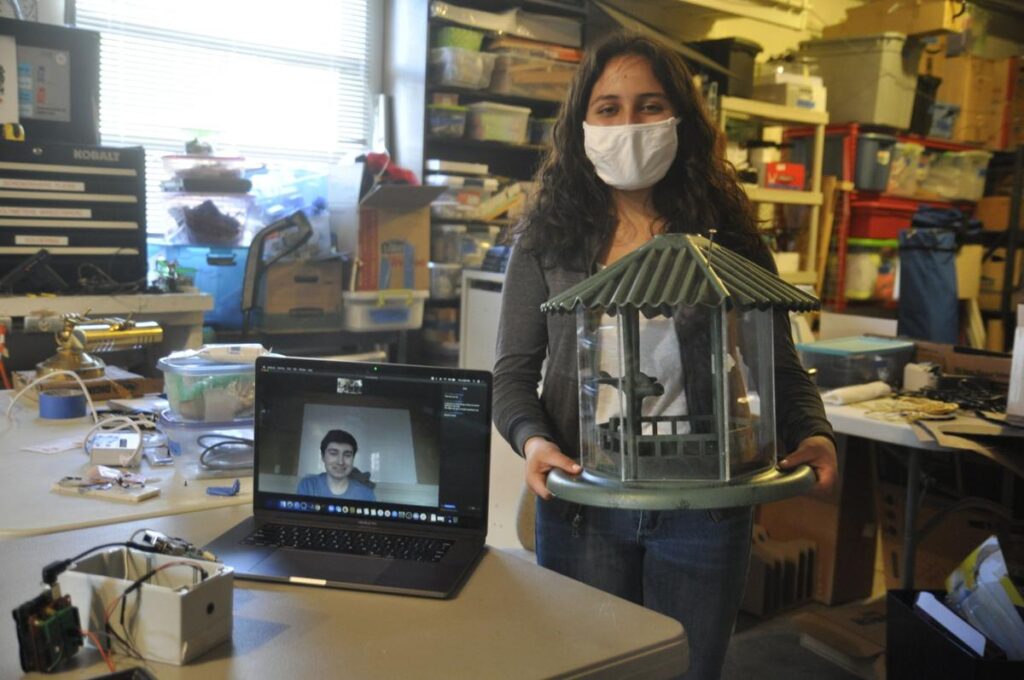The event had been postponed twice, first due to COVID and then due to foul weather.
The sensor was built by students, interns and staff of GLAS Education in Williams Bay as part of the LENSS (Lakeshore Environment and Night Sky Sensor) project.
Tom and Kristen Freytag permitted GLAS to site the sensor on their Geneva Lake shore property.
Kristen Freytag, who sits on the Environmental Education Foundation board of directors, said she was glad to host the first GLAS light pollution sensor. The EEF helped fund the light sensor project. “In the name of science it is my pleasure to do this,” she said.
Freytag said that light pollution along the Geneva Lake shore washes out the nighttime horizon. “I want to see stars on the horizon,” she said.



A crowd of 30, including students and staff from GLAS and representatives of the EEF, the Geneva Lake Association and the Geneva Lake Environmental Agency, braved chilly temperatures for the LENSS kick-off.
The sensor is about 3 ½ inches by 5 inches with a lens that scans a 60-degree arc of the sky. The device is on a pedestal with a metal and glass housing that looks like a garden decoration. It automatically posts readings to a website.
Dark night skies are important for human and wildlife health, recent studies have shown. Data collected by the GLAS sensors will be important to lake management practices, said Ted Peters, director of the Geneva Lake Environmental Agency.
“There are some concerns about possible impacts on aquatic life,” Peters said of light pollution. “We know that a lot of fish spawn relative to light at night — or lack of light at night — and artificial lighting could possibly interfere with that process,” he said.
Meredith said that the test period will determine how the sensor stands up to Wisconsin weather. If successful, plans call for five more sensors to be ready by April and 20 sensors posted around the Geneva Lake shore path by the end of summer 2021, she said.Meredith added that future sensors might include devices to gather data on area wildlife.
Larry Happ, a member of the GLAS board of directors, said he wants the next light sensor on his property.“I definitely want to be the next one.” Happ said.
Meredith also recognized Joe Murphy, a Badger senior, who developed the wireless connection that sends data from the sensor to the servers at GLAS and. Chris Kirby, of Williams Bay, a systems engineer who provided guidance to students working on the light sensor.
Geneva Lake Astrophysics and STEAM (Science, Technology, Engineering, Arts and Math), is a nonprofit education organization. More information is at https://www.glaseducation.org/lenss-sensor.
